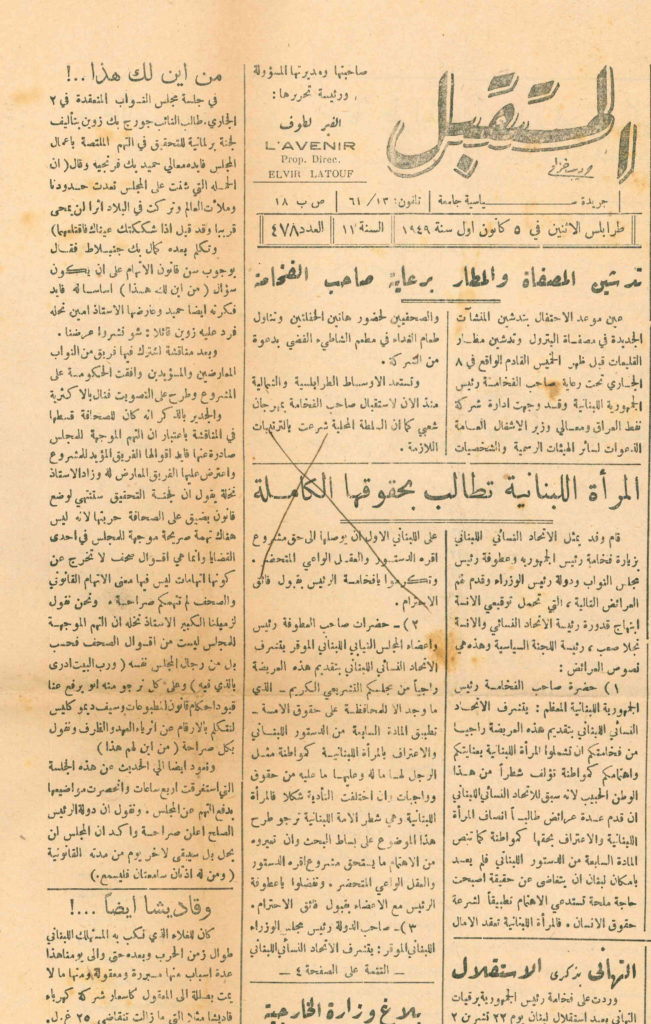Women’s street-level mobilisation for independence and political rights
Women marched alongside men, demanding the release of Sheikh Bshara el-Khoury, Lebanon’s newly elected president post-independence; Prime Minister Riyad al-Solh; as well as other members of the Cabinet, from prison(1)Malek Hassan Abisaab, Militant Women of a Fragile Nation, 1st ed. Syracuse, Syracuse University Press, 2010, p. 60 . Protesters also demanded that the Declaration of Independence be issued. The presidents of the Women’s Union, Eveline Boustros (elected in 1943) and Ibtihaj Qaddoura (elected in 1945), led a number of demonstrations affirming that “a woman is no longer solely for the home, because the whole world can no longer do without her services.”(2)Hanifa Ali al-Katib, تاريخ تطور الحركة النسائية في لبنان وإرتباطها بالعالم العربي، 1800-1975, Beirut: Dar al-Hadatha, 1984, p. 48.


